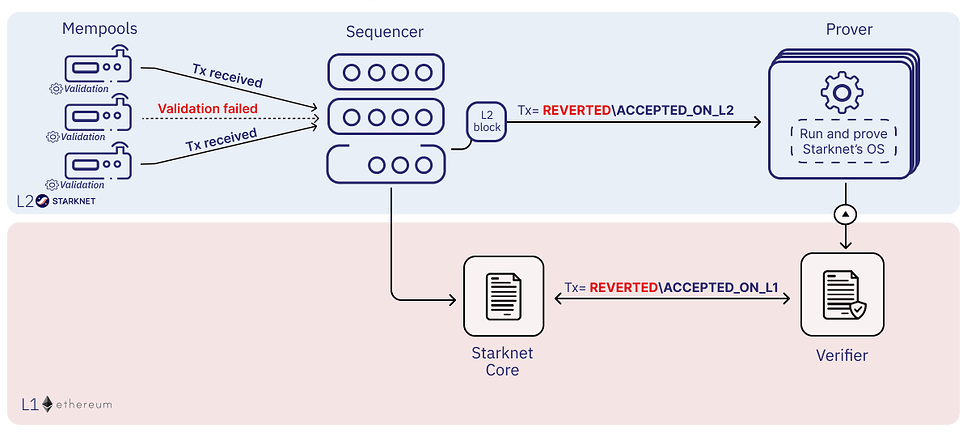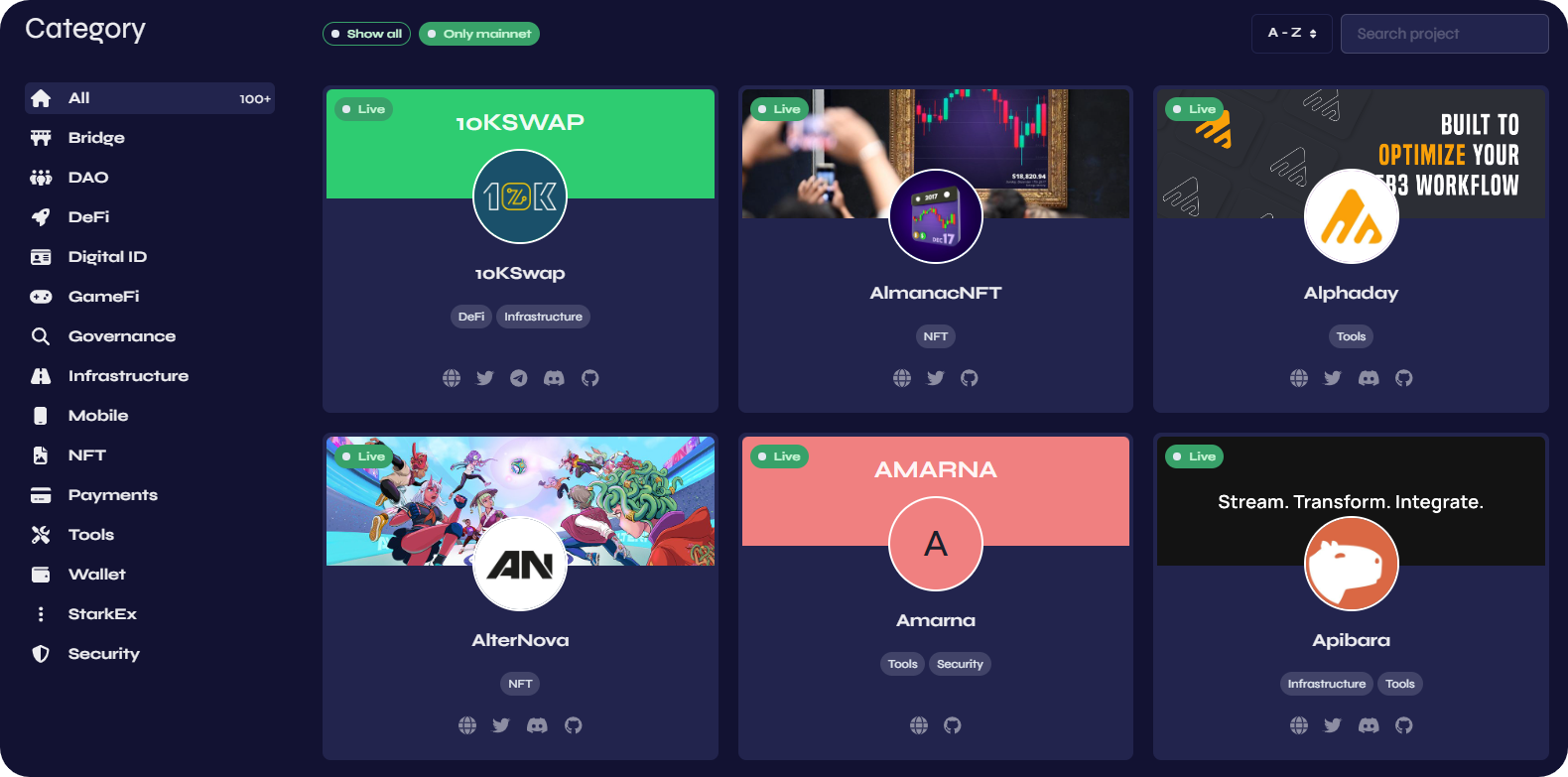Starknet is a Layer 2 (L2) scaling solution for the Ethereum network created by the StarkWare team. It addresses the scalability challenges of Ethereum by enabling faster and cheaper transactions compared to the mainnet.
While Starknet is often referred to as a "zero-knowledge" (ZK) rollup, its builders prefer the term "validity rollup." This avoids the confusion associated with the ZK phrasing, which can misleadingly imply that privacy features are a necessary component.
In reality, the primary goal of this genre of L2 is enforcing the validity of transactions, not necessarily their privacy.
Key takeaways
- Starknet employs its own specialized virtual machine, the Cairo VM, instead of the Ethereum Virtual Machine (EVM), showcasing the flexible design space available to L2s.
- Starknet's use of advanced cryptographic proofs known as STARKs ensures high security and low transaction costs.
- The L2 also offers native support for account abstraction (AA), which provides various streamlined functionalities for developers and users alike.
What is Starknet?

As a validity rollup, Starknet functions as an external execution environment for Ethereum transactions. It aggregates numerous transactions offchain, i.e. outside of Ethereum, and posts condensed batches to Ethereum using validity proofs.
With more users and transactions, the batches become larger and more frequent, further optimizing the cost distribution because the fixed cost is divided among a larger number of users. This can make Starknet increasingly cost-effective as the network grows.
Besides its validity rollup architecture, some of the main pillars of Starknet are as follows:
- 🌐 Cairo — This is the native programming language of Starknet, designed for writing provable programs. It is a Turing-complete language that enables developers to harness the power of STARKs. Cairo’s syntax is inspired by Rust, making it developer-friendly and easy to read and write.
- 📱 Account Abstraction — Allows for more flexible user experiences, enabling functionalities like multi-factor authentication, social recovery, and gasless transactions. With AA, Starknet offers a user experience comparable to traditional Web2 applications, making it easier for mainstream users to interact with decentralized apps.
- ⛓️ Starknet Appchains — Additional instances of Starknet designed to power specific applications. These appchains offer customizable network configurations, allowing developers to tailor their L2 solutions to meet the unique needs of their applications.
How does Starknet work?
When a transaction is initiated on Starknet, it is first received by the sequencer, a key component responsible for collecting and ordering transactions.
The sequencer then processes these transactions off-chain, creating a batch of transactions that are then executed together. The results of these executions are aggregated into a single proof.

This proof is generated by the prover, another critical component of Starknet. The prover uses the Cairo programming language to generate STARK proofs, which are then submitted to the Ethereum mainnet for verification.
If the proof is valid, the new state of the network is updated on Ethereum, ensuring the security and integrity of the transactions.
Why Starknet?
Starknet stands out due to its unique combination of scalability, security, and developer flexibility.
By leveraging STARK proofs, Starknet ensures the highest level of security while significantly reducing transaction costs. Its native support for account abstraction and customizable appchains further enhances its appeal, offering developers the tools they need to build sophisticated, scalable apps.
Additionally, Starknet's ongoing upgrades, such as the integration of Cairo Native and work on parallel transactions, promise even greater performance improvements and fee reductions in the future. These advancements make Starknet a compelling choice for developers looking to build the next generation of apps in the Ethereum ecosystem.
How to invest in Starknet?
The native token of Starknet is STRK. At the time of this guide's latest update, STRK was trading around $0.60 per token with a market capitalization of approximately $780 million.
STRK can be purchased or sold on various cryptocurrency exchanges, including large centralized exchanges like Kraken as well as decentralized exchanges like Uniswap.
In the future, it will be possible to stake STRK within a proof-of-stake (PoS) system to support the network's security and decentralization. Staking will allow holders to earn rewards for servicing the operations of Starknet.
Top Starknet projects

The Starknet app ecosystem is currently comprised of over 120 unique projects. Some of the top efforts to explore here include:
- 🪙 AVNU – a decentralized exchange catering to Starknet
- 👛 Argent – a popular Starknet wallet
- 🎮 Cartridge – builders of the Starknet onchain game engine Dojo
- 🚀 Influence – a fully onchain space strategy game
- 🌉 Layerswap – a fast bridge that supports Starknet
- 👾 Realms.World – an onchain gaming ecosystem
